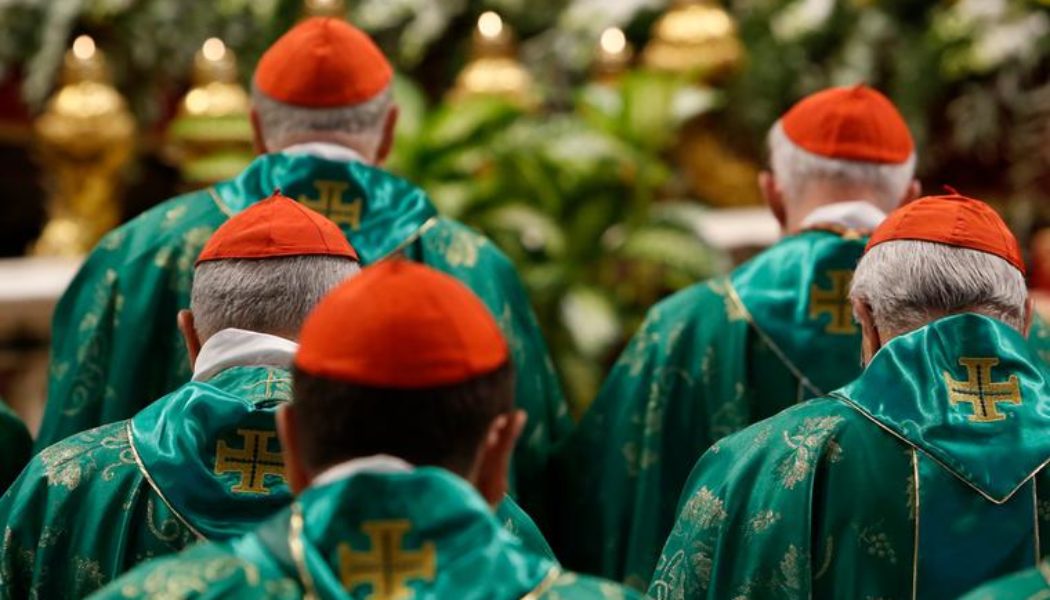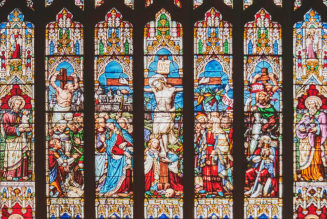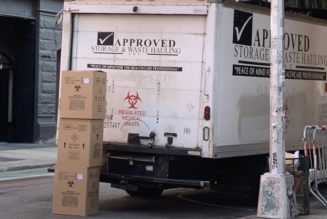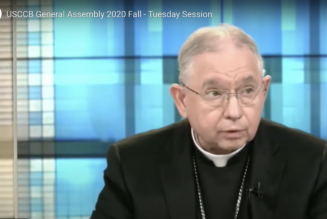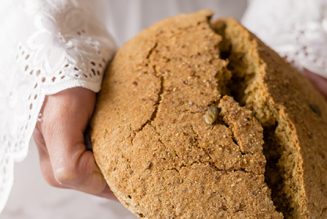
If 2024 turns out like most years of Pope Francis’ decade-long reign, the Catholic Church will soon be getting a new slate of cardinals.
And if Pope Francis does call his 10th consistory before 2024 ends, it’s reasonable to think that an American could be among those to receive a “red hat.”
Since becoming pontiff in March 2013, Francis has created new cardinals in every full calendar year of his pontificate except 2021. And with the backstretch of 2024 already upon us, the Vatican rumor mill is already turning about a forthcoming consistory.
The Italian traditionalist blog Messa in Latino cites “plausible rumors” that Pope Francis will soon announce a consistory set for October’s synod, while ecclesial insiders like Ed Condon are speculating about which Church leaders from around the world could be in line to become cardinals.
Will a U.S. prelate be among them? With Boston’s Cardinal Seán O’Malley no longer eligible to vote in a papal conclave after turning 80 this past June, the Pope could be looking to add another American cardinal-elector.
Additionally, at 87 years old, Francis could view a 2024 consistory as one of his last remaining chances to leave his mark on the American episcopacy, a group that is both hugely influential in the universal Church but also seen as somewhat unenthused about some of Francis’ priorities.
Currently, there are 10 American cardinals among the 124 eligible to vote in a conclave. Pope Francis has created six of them: Cardinals Blase Cupich of Chicago; Joseph Tobin of Newark, New Jersey; Wilton Gregory of Washington, D.C.; Robert McElroy of San Diego; Kevin Farrell, prefect of the Dicastery for Laity, Family, and Life; and Robert Prevost, prefect of the Dicastery for Bishops.
Of course, given Pope Francis’ documented preference for expanding the geographic makeup of the College of Cardinals, it wouldn’t be surprising if he didn’t add another American. While representation from the Global South has gone up during Francis’ pontificate, the percentage of cardinals from North America has fallen, from 12% in 2013 to 10% as of last September’s conclave.
But if Pope Francis does add another American, a small batch of U.S. prelates exhibit some of the qualities he typically looks for when he creates cardinals, such as shared ecclesial priorities, collaboration on a papal project of importance, and affiliation with the peripheries.
Here are six prelates who Pope Francis could pick to become America’s next cardinal.
Archbishop Jóse Gómez
Archdiocese of Los Angeles
72 years old
By conventional standards, no American prelate is more qualified to wear the red than Archbishop Gómez. The Los Angeles prelate leads an archdiocese with more than 5 million Catholics, the largest in the U.S. and one of the largest in the world. His three immediate predecessors in Los Angeles were all named cardinals, and the Mexican native’s personal experience of immigration and leadership on the issue squares nicely with a Francis priority.
But all of these things have been true of Archbishop Gómez throughout the present pontificate — and yet he has been passed over in all nine consistories convened by Pope Francis.
The conspicuous fact is part of a broader pattern of the Pope skipping over prelates from traditional “cardinalatial” sees, like Paris and Milan. But in Archbishop Gómez’s case, it’s especially glaring: Pope Francis has not only not made the Los Angeles archbishop a cardinal, but he gave the red hat to the ordinary of one of Archbishop Gomez’s suffragan dioceses, Cardinal McElroy, in 2022. Some have surmised that Archbishop Gòmez’s previous leadership of the U.S. Conference of Catholic Bishops (USCCB), or even his ties to Opus Dei, could be behind the papal pass-over.
But perhaps a consistory at the twilight of Pope Francis’ pontificate will change all of that. While some have speculated that the Pope is using consistories to “stack the conclave,” ensuring that a successor who continues with his reform agenda is elected, it’s also true that Francis has recently made the effort to define himself and his legacy as less disruptive than the common narrative suggests. Perhaps offering the red hat to an American prelate as well-respected as Archbishop Gómez could be one way to do that.
Archbishop Paul Etienne
Archdiocese of Seattle
65 years old
Last summer, Pope Francis tapped Archbishop Etienne as one of his personally nominated delegates to the Synod on Synodality. The only other American prelates to receive that designation, other than Cardinal O’Malley? Cardinals Cupich, Gregory and McElroy — each given the red hat by Francis.
The Seattle shepherd’s inclusion among the Francis-made American cardinals suggests that he may be in next in line to become one.
Like Francis’ U.S. cardinal picks, the pastorally minded Archbishop Etienne has emphasized Pope Francis’ priorities in his ministry, speaking out on issues like care for creation and nuclear disarmament.
Widely regarded as the “progressive bloc’s” candidate in the 2022 elections for USCCB president, Archbishop Etienne only mustered 37 of 242 votes (15%). Of course, being somewhat of a stand-apart from the U.S. episcopacy is arguably what Pope Francis has typically looked for when picking American cardinals.
There are certainly other American archbishops who have been elevated by Pope Francis and seem to share his pastoral priorities, such as Archbishops Mitchell Rozanski (St. Louis), Christopher Coyne (Hartford, Connecticut) and Gregory Hartmayer (Atlanta). But the fact that Archbishop Etienne is already thought of in Rome as a peer to Cardinals Cupich, Gregory and McElroy suggests that he may be the most likely candidate to join them in the College of Cardinals.
And if the next consistory is really set to take place amidst October’s synod session, he’d already be there.
Bishop Daniel Flores
Diocese of Brownsville, Texas
62 years old
Pope Francis has given red hats to prelates who have played a pivotal role in executing initiatives important to the Holy Father, such as Portuguese Cardinal Américo Aguiar, who led World Youth Day 2023 in Lisbon as a then-auxiliary bishop.
If Francis hews to that criterion again, consider Bishop Flores to be a strong candidate for a red hat.
As the USCCB’s doctrine head, Bishop Flores has adeptly led the U.S. bishops’ implementation of the various stages of the Synod on Synodality — no easy task, given heightened concerns about the initiative. The Pope already expressed his esteem for Bishop Flores by making him one of only nine “presidential delegates” from across the world at the Rome synod sessions. Who’s to say Francis doesn’t go a step further by naming Bishop Flores to the College of Cardinals?
But whereas Francis’ other U.S. cardinal picks have been divisive among the local episcopacy, Bishop Flores’ selection would be something of an olive branch between Rome and America. The Texas native is widely respected throughout the U.S. ecclesial landscape and across typical partisan divides.
And while there are other moderate, Latino prelates who are well-regarded across the U.S. Church (Philadelphia’s Archbishop Nelson Pérez comes to mind), the symbolism of having a “prince of the Church” in the lowly border diocese of Brownsville may be too much for Pope Francis to pass up on.
Bishop John Stowe, OFM, Conv.,
Diocese of Lexington, Kentucky
58 years old
If giving a red hat to someone like Bishop Flores or Archbishop Gomez would be a reconciling move between Rome and the U.S., tapping Bishop Stowe would be the polar opposite: It would be seen as nothing short of a parting shot from Francis to the majority of U.S. bishops and active Catholics.
It’s hard to think of an American prelate who has been more divisive than Bishop Stowe. He has criticized the National Eucharistic Revival as opposed to synodality and defied his brother bishops by publicly endorsing the Equality Act, pro-LGBTQ legislation that the USCCB opposed due to religious-liberty concerns.
Bishop Stowe’s critics have been quick to point out ways in which his stances appear to diverge from Pope Francis’ such as his recent approval of a transgender hermit’s vows, which seems to run afoul of recent Vatican guidance critical of gender theory.
But Pope Francis clearly has a pattern of using his U.S. cardinal picks as a way to chastise the USCCB status quo. And if this is his primary consideration when selecting the next American red hat, as opposed to picking a unifying figure, it’s hard to think of a more fitting candidate than the contentious Bishop Stowe.
Bishop Mark Seitz
Diocese of El Paso, Texas
Age 70
Pope Francis likes to give the red hat to prelates embroiled in conflict as a pledge of papal backing.
El Paso is certainly not a war zone, but it is in the epicenter of the southern border’s migration crisis. And giving the red hat to Bishop Seitz, a strong voice for justice to migrants, would certainly send a powerful message. Most recently, the El Paso bishop has gone toe-to-toe with the Texas state government over its targeting of Catholic charities ministering to migrants. Perhaps the Pope will conclude that Bishop Seitz will be even more effective with “cardinal” in front of his name.
What’s more, the Pope is already clearly familiar with Bishop Seitz’s ministry. He gave the Texan blessed rosaries for victims of the 2019 Walmart shooting and their families, called Bishop Seitz after he took part in a prayer vigil against racism in 2020, and praised the El Paso prelate in a May 2024 interview with CBS News, calling him “a great bishop” who “does the impossible to help migrants.”
Pope Francis clearly thinks highly of Bishop Seitz’s ministry. Giving him the red hat would be the ultimate seal of papal approval.
Archbishop-Elect Richard Henning
Archdiocese of Boston
59 years old
If Pope Francis is looking for a successor to Cardinal O’Malley in a future conclave, why not pick the prelate he already tapped to follow Cardinal O’Malley in Boston?
Archbishop-elect Henning is intelligent, forward-thinking and mission-driven — all qualities that led Pope Francis to install him as the head of one of the country’s most prominent sees at only 59 years old. Presumably, these same qualities would make the Long Island native and outgoing bishop of Providence, Rhode Island, a valuable cardinal as well.
And while picking a recently elevated 50-something-year-old with minimal episcopal experience to join the exclusive College of Cardinals may seem dramatic, there’s Pope Francis precedent for it. The Pope gave 58-year-old Spanish Cardinal José Cobo Cano the red hat last September, just months after he had made the former auxiliary bishop the archbishop of Madrid.
At the same time, Francis moved three other prelates under 60 into major archdioceses last year, including Archbishop Francis Leo of Toronto, and none of them received a red hat at last September’s consistory. So there’s no guarantee that one is coming to Archbishop-elect Henning in Boston. As with so many other things with this pontificate, we’ll just have to wait and see.
